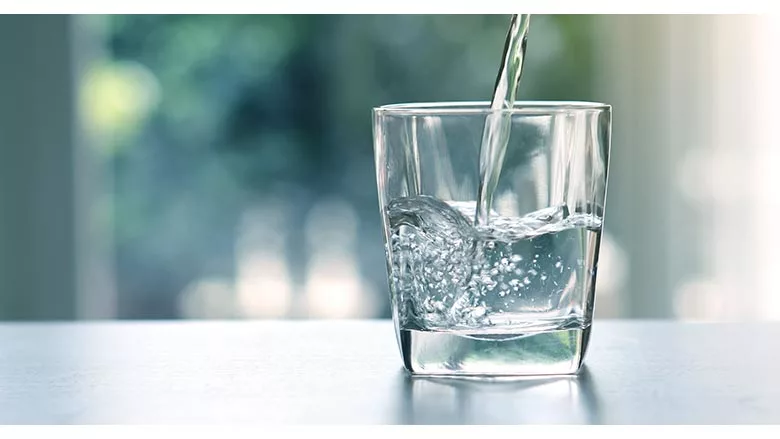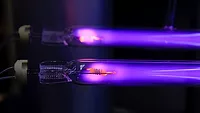James Dipping: Plumbing engineering for 2022: A call for water intelligence in the age of smart buildings
Current plumbing infrastructure designs put occupants at risk.

The commercial building community is giving its full attention to improving indoor air quality as we attempt to make our way out of the COVID-19 pandemic. While it’s true that germs and pathogens can be carried through the air, we’re forgetting how easy it is to pick them up through the water we drink, wash our hands with and cook our food in.
According to the Centers for Disease Control and Prevention (CDC), 7.2 million Americans get sick every year from diseases that spread through water. Cases of Legionnaires’ disease, the most common waterborne illness in the United States, have grown by nearly 900% since 2000.
It’s 2022. We need to focus more on what our water’s doing than ever before so we can be proactive with building water quality rather than reactive. How can we do this?
The answer is to improve the intelligence of our building plumbing infrastructure in the same way HVAC systems have done for years.
Having easily accessible temperature, flow and composition data beyond the building mechanical room will enable building engineers to improve occupant health and safety. Plumbing systems must be part of the data-driven building performance equation in 2022.
Water conservation efforts and plumbing codes clash as engineers work to protect building occupants
Today’s water pipe sizing practices are outdated and don’t consider the decreased volumes of water used by widespread low-flow fixtures, which leave water in the pipes and increase building water age.
The fixture unit method used to calculate water pipe size in most codes is based on the outdated Hunter’s Curve, developed back in the 1940s when plumbing fixtures were consuming water at much higher volumes. The plumbing engineering community must question why we are using a calculation method that fails to reflect the reality of today’s low-flow designs.
When water was flowing at higher volumes through plumbing systems, the water purveyor’s primary and secondary disinfectants had the best chance at eliminating waterborne pathogens, because the chemicals used have a certain shelf life. The use of low-flow fixtures in conjunction with outdated water pipe sizing practices allow the disinfectants to expire before the water reaches your faucet. As a result, pathogens are given the opportunity to grow and multiply inside the building pipes.
Standards put out by the CDC, ASHRAE, the Occupational Safety and Health Administration OSHA) and World Health Organization (WHO) are encouraging building owners and plumbing engineers to elevate the domestic hot water in our hot water supply and return systems to reduce the development of Legionella and other waterborne pathogens.
But without improved plumbing system intelligence beyond the mechanical room, how do we know about domestic hot water distribution system performance in the distant pathways of our buildings? The answer is: We don’t. We are putting occupants at risk every day with current plumbing infrastructure designs.
Temperature monitoring is the way to improve system performance and protect building occupants
The failure to monitor the temperature of domestic water systems outside the mechanical room is increasing a building’s exposure to risk, litigation and is hurting the bottom line. In the hospitality industry, the two biggest complaints are the lack of hot water and water that’s too hot or scalding.
With an inability to confirm the water temperature in the supply piping to a guest room at the time such a complaint is lodged, hospitality establishments are forced to go along with whatever the guest claims, even when the complaint leads to a lawsuit.
If building management systems began incorporating more water temperature monitoring, it would be possible to know exactly what the water temperature is in a given pipe at any given time. Not only would this data enable buildings to confirm or dismiss water complaints, but it would ultimately give facilities the tools to improve systems performance and occupant health.
Assessing air temperature is an easy check as HVAC systems commonly include intelligence to monitor and control throughout the building. To get an accurate assessment of water temperatures throughout the building, it is common that the only option is to hold a thermometer through a stream of water emerging from an open fixture. And, if a point-of-use mixing valve is used at the fixture, this temperature is not reflective of the pipe’s temperature. Considering the advanced monitoring technology available, our current approach to monitoring plumbing systems is truly antiquated.
With an accurate picture of water temperatures as measured by sensors strategically placed throughout the building’s pipes, these levels can be properly adjusted to improve system performance, better reduce water pathogen growth and improve overall water quality. With this key building intelligence in hand, building engineers and managers would be much better equipped to take a proactive water management role and deliver safer, more hygienic water at the right temperature.
A call for water intelligence
The time is now. We must consider applying the same level of technologies and controls currently in place in our building’s HVAC systems to our plumbing systems. Plumbing systems must get smarter and our water management programs must be informed by more sound intelligence.
Right now, most connectivity from the plumbing systems to the building automation system takes place in a mechanical room. But this simply isn’t enough to provide the intelligence required to effectively improve water quality and occupant safety for years to come.
Plumbing systems are the area where waterborne pathogens thrive. We must focus the time, energy and investment required to alleviate this problem and deliver the water quality and safety that building occupants deserve. It’s high time our plumbing systems become data driven.
Looking for a reprint of this article?
From high-res PDFs to custom plaques, order your copy today!










